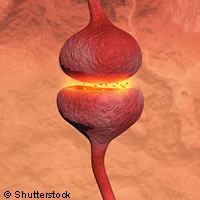Researchers find way to generate neurons
Partly EU-funded researchers have converted glial cells of the brain into two different functional classes of neurons. Their findings, published in the journal Public Library of Science (PLoS) Biology, could lead to important progress in the treatment of neurodegenerative diseases such as Alzheimer's or stroke. The study was funded in part by the EUTRACC ('European transcriptome, regulome and cellular commitment consortium') project, which is supported with EUR 12 million under the 'Life sciences, genomics and biotechnology for health' Thematic area of the EU's Sixth Framework Programme (FP6). Glial cells (or glia), commonly known as the glue of the nervous system, surround neurons which are in charge of transmitting information. Glia provide them with nutrients and oxygen and insulate neurons from each other. They also protect them from pathogens and remove dead neurons. This new study focused on astroglia (star-shaped glial cells), one of the most common types of glia. Astroglia have several projections that form a supportive scaffolding for the neurons. They are also closely related to radial glial cells. During embryonic development of the brain, these radial glial cells either convert into neurons themselves or serve as a scaffold upon which newborn neurons migrate. While astroglia do not normally have the potential to generate neurons, the research team around Professor Magdalena Götz and Dr Benedikt Berninger of Helmholtz Centre Munich in Germany managed to trigger their conversion into two main classes of cortical neurons. More specifically, the astoglia converted into excitatory and inhibitory neurons that - as their names indicate - excite or inhibit action in the target cell. These results were achieved thanks to the selective expression of specific transcription factors, proteins that bind to specific DNA (deoxyribonucleic acid) sequences and thus control the transfer of genetic information. 'In this study we have succeeded in reprogramming the newly created neurons to the extent that they can now develop functioning synapses. These release - depending on the transcription factor used - either excitatory or inhibitory neurotransmitter substances,' says the lead author of the study, Dr Christophe Heinrichs of Ludwig Maximilians University (LMU) in Munich. 'Our findings nurture the hope that the barrier separating the astroglial and neuronal cells - closely related as they are - is not insurmountable,' adds Dr Berninger. This could open up new avenues for repairing neuronal damage, as caused by neurodegenerative diseases, for instance. On EUTRACC, 20 partners have joined forces to determine the regulation of the human genome. Embedded in an international network, the project aims to map genetic regulatory nodes and networks that control the process of differentiation to specific cell types. It studies the genetic circuitry in control of the formation of neural tissues and the blood system.
Countries
Germany



